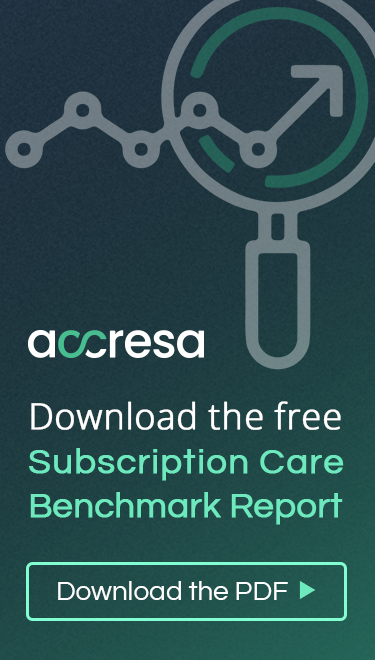Transparency often brings clarity, guiding patients and providers toward better outcomes in a complex healthcare landscape. Nearly 90% of patients in the United States believe price transparency in healthcare is important, yet only a small fraction of patients feel confident they can access accurate pricing information. This glaring disparity underscores the critical need for transparency in our healthcare system.
Transparency in healthcare isn’t just about revealing costs. It involves sharing information that empowers patients to make informed decisions about their care, promotes accountability among providers, and drives continuous improvement across the industry. For policymakers, transparency provides invaluable insights into the healthcare landscape, enabling the development of policies that promote efficiency, equity, and quality. For patients, it demystifies the complexities of healthcare, allowing for choices aligned with their health goals and financial capabilities. For healthcare providers, it serves as a catalyst for adopting best practices and fostering a culture of openness and trust.
From empowering patients to enhancing care quality and fostering competition based on value, transparency holds the key to achieving a healthcare system that prioritizes patient welfare and delivers high-quality care.
What is Healthcare Transparency
Healthcare transparency is defined as the provision of clear, accessible, and understandable healthcare information to improve decision-making and drive better outcomes. There are three main facets of healthcare transparency:
Price transparency provides patients with visibility into the costs associated with their care. From the upfront pricing of procedures to the breakdown of out-of-pocket expenses, price transparency empowers patients to make financially informed decisions about their healthcare.
Quality transparency involves performance and outcomes metrics of healthcare providers that offer patients insights into the quality of care they can expect. By accessing information on provider performance, patients can confidently choose providers who meet their standards for quality and safety.
Outcome transparency focuses on the results of healthcare interventions, allowing patients to assess the effectiveness of different treatment options. By understanding the expected outcomes of various treatments, patients can make informed decisions that align with their healthcare goals.
Overall, healthcare transparency is pivotal in empowering patients and providers. Let’s examine how.
Impact of Healthcare Transparency on Patients
Healthcare transparency can profoundly affect patients, empowering them to make more informed decisions about their care, enhancing their trust and satisfaction, and providing greater financial security.
Improved Patient Trust and Satisfaction
Transparent practices create an environment of openness and accountability, building trust between patients and healthcare providers. Patients feel respected and involved in their care decisions when providers share information about treatment options, costs, and outcomes. This open communication ensures patients clearly understand their healthcare journey, reducing anxiety and strengthening the provider-patient relationship.
Increased Awareness and Informed Decision-Making
Access to pricing information and understanding of treatment options and outcomes enable patients to make informed decisions about their care. By comparing costs and outcomes across providers, patients can choose the most suitable and cost-effective options, leading to better treatment outcomes and greater satisfaction with their healthcare experiences.
Enhanced Financial Security
Price transparency mitigates surprise medical bills and allows patients to make cost-effective choices. By knowing the costs upfront, patients can budget for their healthcare expenses and avoid unexpected financial burdens. This financial security reduces patient stress and promotes a more equitable and transparent healthcare system overall.
By empowering patients with comprehensive and understandable information, healthcare transparency improves patient outcomes, fosters trust, and enhances the healthcare experience.
Impact of Healthcare Transparency on Providers
Healthcare transparency initiatives have significant implications for healthcare providers as well. The push towards more transparent healthcare through new government regulations aimed at making healthcare costs and outcomes more open has been met with some pushback from stakeholders on the provider side. While the intentions behind transparency laws are generally positive, provider organizations are more reluctant because transparency initiatives have significant implications for them as well.
Accountability and Quality Improvement
Public reporting of quality metrics incentivizes providers to enhance their performance and accountability. By making quality data accessible to the public, healthcare providers are motivated to maintain high standards of care to enhance their reputation and competitiveness. This transparency acts as a catalyst for quality improvement initiatives as providers strive to meet or exceed benchmarks, leading to the adoption of best practices and evidence-based interventions.
However, meeting these transparency demands places a significant burden on provider organizations. They have to implement data management systems and train staff to collect and maintain information to reflect the most current data. For many providers, especially smaller practices or those with limited resources, the task can be daunting. It requires not only financial investment in technology and personnel but also a substantial allocation of time that could otherwise be dedicated to patient care. This administrative complexity can strain resources and distract from the core mission of providing high-quality care, highlighting the need for efficient, scalable solutions that help them meet transparency demands without compromising service delivery.
Competition and Market Dynamics
Transparency in pricing, quality, and outcome metrics enables patients to compare providers easily, influencing their choice of healthcare services. This healthcare transparency affects provider reimbursement rates and forces healthcare professionals to adapt to patient needs and preferences. As a result, health systems must adjust to new patient expectations and demands, such as comprehensive price lists, while improving service quality to remain competitive in the market. This level of openness can lead to increased competition, as patients gain the ability to compare providers based on these metrics easily. For health systems that have higher prices, transparency could place them at a perceived disadvantage against lower-cost providers.
Additionally, if the quality or outcomes data are not contextualized or understood correctly by the public, it could unfairly impact the reputation of health systems that treat more complex or challenging cases. Such competitive pressures may drive health systems to focus not only on maintaining high standards of care but also on effectively communicating the value they provide to ensure that patients can make informed comparisons that consider the nuances of healthcare quality and outcomes beyond just cost.
Legal and Ethical Considerations
Providers must navigate ethical considerations, including balancing transparency with patient privacy and addressing disparities in access to information. Transparency requirements may raise concerns about patient privacy, necessitating careful management of sensitive data. Additionally, providers must address inequities in access to information, ensuring that all patients have equal access to transparent healthcare information regardless of their socioeconomic status or health literacy level.
Errors or omissions in reporting can lead to legal repercussions, including fines, penalties, and sanctions from regulatory bodies. Furthermore, there’s the risk of litigation if patients or other stakeholders believe that misleading or inaccurate information has led to financial harm or suboptimal healthcare decisions. Health systems must navigate the fine line between compliance and maintaining confidentiality, as over-disclosure could inadvertently violate patient privacy laws, such as HIPAA, in the United States.
Regulations and Future Implications
The regulatory landscape plays a pivotal role in shaping healthcare transparency and its implications for both providers and patients. The 2021 Consolidated Appropriations Act (CAA) particularly mandates various transparency requirements aimed at improving accessibility to healthcare pricing information. These regulations compel healthcare providers to disclose pricing data for medical procedures, enabling patients to make informed decisions about their care.
Regulatory efforts to enhance transparency empower patients by improving accessibility and understanding of information on cost and quality. Patients can make more informed decisions about their healthcare options based on available data, influencing their choice of providers and services.
The implementation of price transparency requirements mandated by regulations such as the 2021 CAA has significant implications for provider networks. Providers must comply with these regulations, ensuring that pricing information is readily accessible to patients. This contributes to variability in provider reimbursement rates and competitive market dynamics, as patients can compare prices and quality metrics across different providers.
Healthcare transparency regulations will continue to shape the industry, impacting care delivery and outcomes. While these regulations present opportunities for improvement and innovation, they also pose challenges in compliance and data management.
Conclusion
For a long time, healthcare stakeholders have routinely hidden the real costs and quality of care behind complicated processes. as a result, employer health plan sponsors and patients don’t know the true costs of care. Healthcare transparency moves us closer to understanding the actual costs when healthcare services are rendered.
As we look to the future, stakeholders across the healthcare ecosystem must continue collaborating to enhance the practicality of transparency initiatives while addressing new and existing challenges. We see numerous benefits from employers working directly with provider networks to reduce inefficiencies. By working together and embracing such direct opportunities for innovation, health plan sponsors, patients, providers, insurance companies, and policymakers can develop solutions that improve transparency and promote high-quality, affordable healthcare.
Contact us today to explore how to incorporate Subscription Care into your employee health benefits package.


